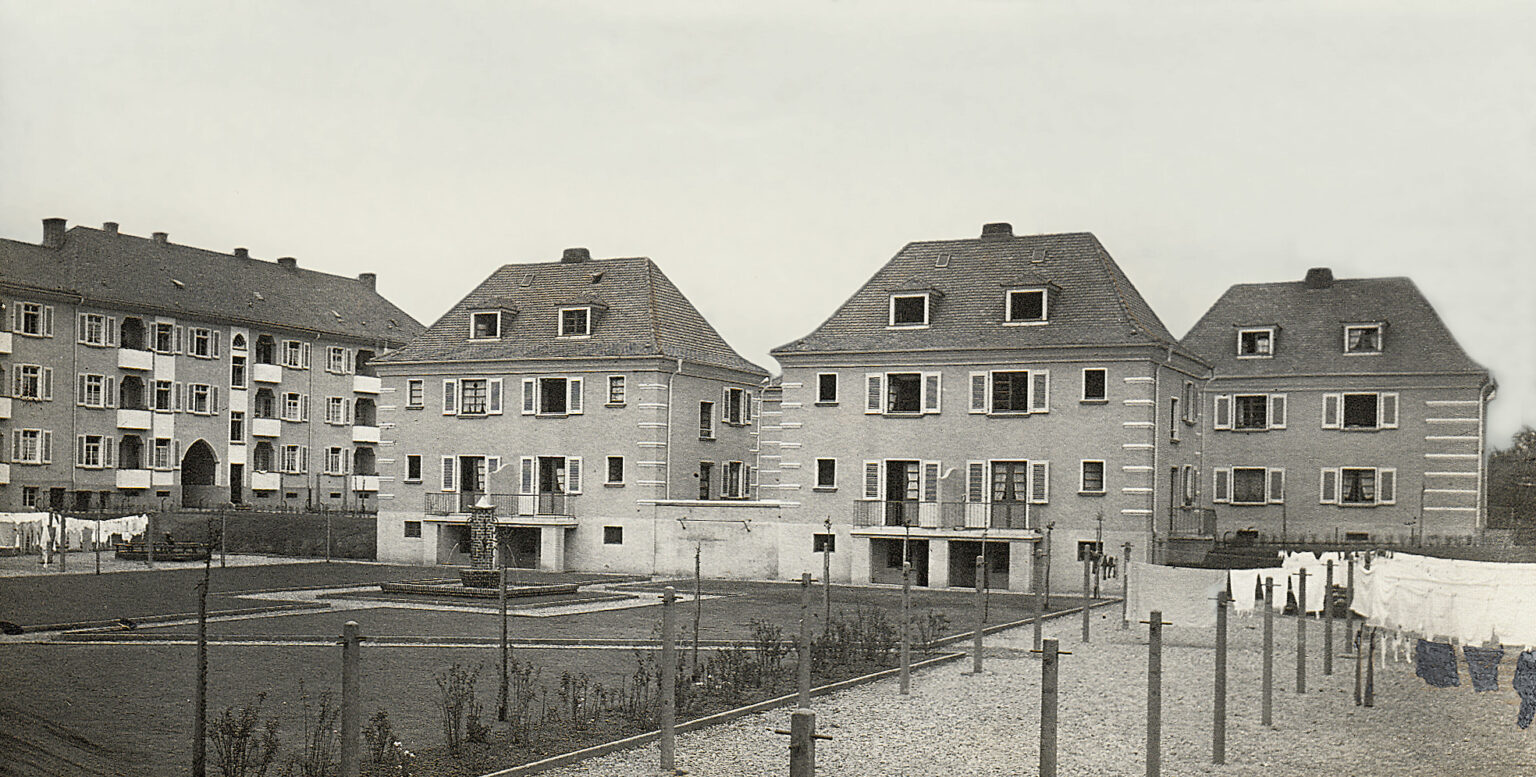 |
 |
 |
In the first years after it was founded in 1921, the Heidelberg housing association known as GGH realised several large housing projects in the districts of Handschuhsheim and Wieblingen. “Old Atzelhof” was the first housing estate in Handschuhsheim with around 200 flats and ten shops and was completed in the early 1920s. The „New Atzelhof” with a further 48 flats and two shops was under construction when a second large housing estate was started in Handschuhsheim in 1926: the „Mühling Street housing estate“. Thanks to modern construction methods and new technical processes, around 100 flats and three shop units were completed in just 100 days. After only a short time, the housing estate became known as „Blaue Heimat”, meaning “blue home”, because of the striking colour of its façade. The second construction phase was completed in 1934.

1927, fertig gestellte Neubauten der „Blauen Heimat“ mit den Gebäuden: Im Stopfelgarten, Archiv, Blauer Ordner 1
The „Wagner principle”
The construction costs for the settlement amounted to around 950,000 Reichsmarks, which was favourable for the time. The cost and time savings were mainly due to the „Wagner principle“. This novel building method was based on a construction made of reinforced concrete and iron. The actual masonry served only as a filler and as thermal protection. This not only allowed the shells of the buildings to be erected more quickly. Huge fans were used to dry out the walls more quickly.

Blaue Heimat, 1927 im Rohbau. Hintergrund Alt Handschuhsheim mit Friedenskirche, Archiv, Blauer Ordner 1
The original „Blaue Heimat“ consists of a perimeter block development along Mühling, Hans-Thoma and Wilhelm-Trübner streets. In 1927, the GGH built ten single-family houses on the cul-de-sac called Im Stopfelgarten. Archways lead to a spacious courtyard with a large lawn. Shortly after the housing estate was built, there was a fountain here and several places for drying laundry. The kitchens of the flats with their loggias look onto the courtyard so that mothers could cook and still be able to see their children playing outside.

1928 Blaue Heimat nach Fertigstellung der Innenanlagen, Archiv, Blauer Ordner 1
High living comfort
Most of the flats were designed with two and three rooms as well as a living room, scullery and kitchen balcony. A bathroom was not planned. Only the ground-floor flats with their own entrance – such as the GGH museum flat at 16 Mühling Street – had a bathroom. Heating was provided by individual cast-iron stoves in the rooms and a tiled stove in the kitchen. Like the „Atzelhof“ built a few years earlier, the fittings of the „Blaue Heimat“ were far above the usual standard for social housing at the time.
In the early years, the tenants were mainly workers, employees, civil servants and members of the self-employed and liberal professions. The rent was 66 pfennigs per square metre.
Energy refurbishment
The buildings on Karl-Philipp-Fohr Street, which were added in the 1950s, underwent significant energy refurbishment in 2004. The measures included passive house components such as triple-glazed windows, thermal insulation and an active ventilation system with heat recovery. Photovoltaic systems were installed on the roof. The redesign of the flats, larger floor plans and balconies, as well as the conversion of the attics, increased the quality of living. Many tenants who had moved to other flats during the refurbishment phase, aided by the GGH’s relocation management, returned to their old flats once the refurbishment had been completed.
Museum duo
In 2021, to mark its 100th anniversary, the GGH housing association opened a museum duo with a permanent exhibition and a museum flat in the „Blaue Heimat“, bringing the history of social housing to life. In the permanent exhibition located at 22 Mühling Street, the GGH provides information on the history of Heidelberg and Handschuhsheim in the 1920s. Three houses further on – at 16 Mühling Street – the GGH has set up a museum flat. The three-room flat provides an insight into the life and living conditions of a Heidelberg family in the 1920s. (bm)